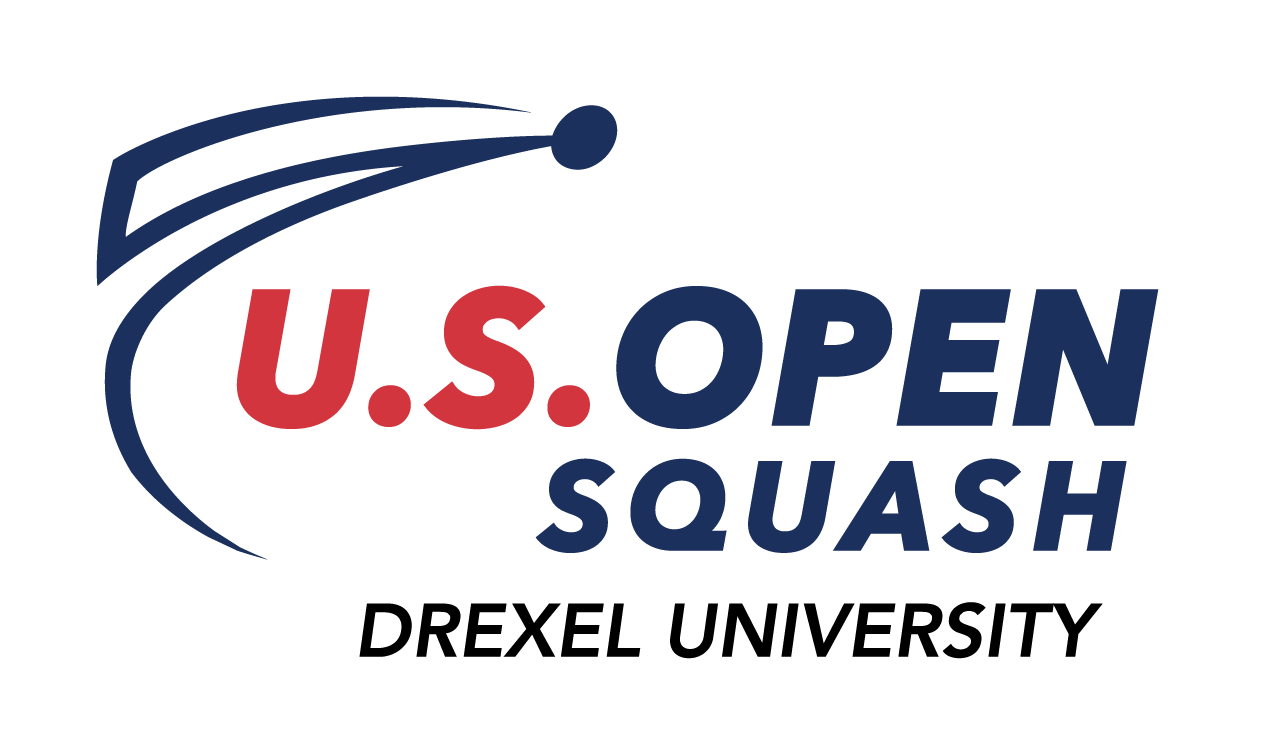
The FS Investments U.S. Open has historically led the PSA World Tour as an innovator in event presentation and parity in prize money, and is now on the forefront of sports-science data collection.
The U.S. Open was the first pro event to have live action photography from the front of the court (at the 1954 Open in New York). It was the first tournament to ever broadcast on television (at the 1959 Open in Pittsburgh). It was the first pro event to use point-per-rally scoring and a seventeen-inch tin (at the 1985 Open in San Francisco). At the 2013 Open in Philadelphia, the event gave equal prize money to men and women, becoming the first major squash tournament to have prize-money parity. All these innovations are now standard for squash.
This year’s revolution is data. Sports Data Lab is at the Daskalakis Athletic Center at Drexel providing real-time data on players’ heart rates. “We are excited to be at the U.S. Open,” said Stan Mimoto, the co-founder and president of Sports Data Labs. “It’s a fantastic venue with the 360 viewing and various seating options that keep it intimate and exciting for all.”
Sports Data Labs provides the technology infrastructure to enable in-game capture, analysis and distribution of real-time human data for athlete and team consumption, as well as other business and consumer applications. During last season Sports Data Labs had provided over eighty hours of real-time human data content captured across fifty matches on three continents for the PSA; they were at the Tournament of Champions in New York, the Windy City Open in Chicago, the British Open in Yorkshire and the World Series Finals in Dubai.
Players strap a sensor to their chest, and their heart rate data is captured by Sports Data Labs real-time transmission platform. The ever-changing number is put up on the Jumbotron above the ASB GlassCourt and onto SquashTV’s broadcast. Spectators can now understand the intensity of world-class squash, especially towards the ends of games when heart rates climb to over 200 beats per minute.
The PSA’s partnership with Sports Data Labs—making in-game physiological data available in real-time—is a first for a professional sport. Moreover, the PSA announced this week at the FS Investments U.S. Open that they have created a prize pool of $100,000 for players who have worn the heart monitors and consented for the PSA to commercialize the in-match data. The revenue-sharing system is launching at the Open and will continue for the rest of the year. Sports Data Labs will be capturing physiological data at Channel VAS at St. George’s Hill, Qatar Classic, Hong Kong and Black Ball Squash Open in Cairo.
“We are delighted to make this announcement during the U.S. Open,” said Lee Beachill, the COO of the PSA, “which is such a prestigious event on the PSA World Tour. Capturing this kind of data and making it available during live matches to squash fans around the world is obviously very new and we are thrilled with the reaction of both fans and players.”
“The vision that the PSA has for using physiological data for both player performance and fan engagement use cases is at the forefront of professional sports,” said Mimoto. “The PSA and the players have been exemplary partners for us, and we are looking forward to continued success at many more upcoming events. The recent announcement of revenue going to the players is also a first in professional sports and something that will surely be looked at closely by other sport leagues. Over the course of the season we will be working closely with the PSA and the players to relay how physical the sport is and continue to expand the metrics that are captured, displayed during games and provided back to the players. These are exciting times.”



